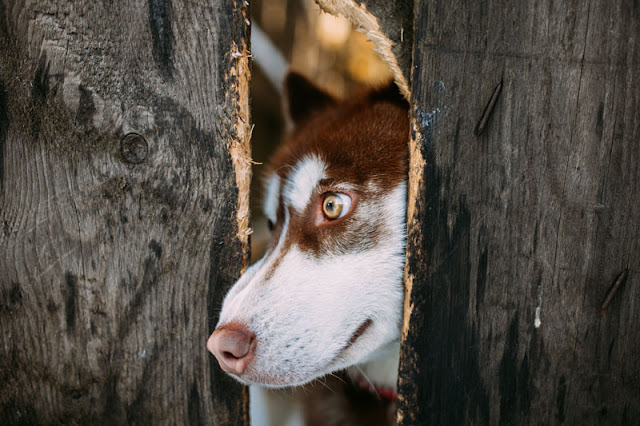What Do People Look for When Adopting a Dog?
A study of over 2000 shelter dogs investigates the physical
and behavioural characteristics that help dogs get rehomed. Some of the
results may surprise you.
As an Amazon Associate I earn from qualifying purchases.
By Zazie Todd, PhD
This page contains affiliate links which means I may earn a commission on qualifying purchases at no cost to you.
This page contains affiliate links which means I may earn a commission on qualifying purchases at no cost to you.
A recent study by Christina Siettou et al (University of
Kent) uses techniques from consumer analysis to gain a better understanding of
people’s choices when adopting a dog from a shelter. The researchers looked at the different
characteristics of dogs waiting for homes and compared it to the likelihood that a new home is found.
The online profiles of 2,037 dogs, described as available on
the Dogs Trust website, were tracked from first appearance until they were adopted.
Dogs Trust was chosen because
it has 18 re-homing centres across the UK and takes care of more than 16,000
dogs every year. Their rehoming procedure includes a thorough behavioural assessment that typically lasts 7 days, including time spent in ‘real life’
rooms at the shelter that mimic homes. Dogs Trust also have facilities where dogs can receive specialist behavioural
training, have a respite from kennels, or even live out their lives; they
say “we never destroy a healthy dog.”
Some American studies (though not all) have found that black dogs and cats take longer to be adopted than those with
different coloured fur. It’s not clear why this is the case. However, in this
study, coat colour made no difference to the likelihood of adoption.
Another factor that did not make a significant difference
was the presence of an existing medical condition. This seems surprising.
However, Dogs Trust has a scheme that gives financial support to people who rehome
a dog with a medical problem. These results suggest the scheme is successful in
encouraging people to consider such dogs. Perhaps also some medical conditions
are not considered problematic by potential adopters.
So what did make a difference? The size of a dog was
important, with small dogs more likely to be adopted, and large dogs the least
preferred. Not surprisingly, age was also a factor - puppies were more likely to be chosen. Pedigree dogs were also preferred over cross breeds.
Behavioural characteristics were important too. Being
friendly to children, friendly to other dogs, and friendly to other pets all
led to higher rates of adoption.
In contrast, needing training or having behavioural problems
led to less likely adoption. This is despite the fact that Dogs Trust provides
extensive training and behaviour advice and support, including classes at adoption
centres and individual sessions in adopters’ homes. It could be that potential
adopters were not fully aware of this support, or that they were still not
willing or able to take on the commitment required.
This study shows the importance of training and behaviour,
both within the shelter environment and following adoption. Unfortunately many
rescues and shelters around the world provide limited behavioural support, or
rely on outdated training methods. This could be due to lack of resources or a
belief that behaviour does not fall within their remit. But, if behaviour is a
significant factor influencing adoption, then it is intertwined with
welfare issues.
The researchers say “Shelter personnel could derive useful
information regarding preferences for dog characteristics that could help in
understanding some of the factors that influence the adopter’s choice in
selecting a dog. More specifically, this article provides quantitative evidence
of what the shelter personnel may intuitively know. This information could therefore serve as a
guide for which dog characteristics to highlight when advertising dogs for
adoption. Highlighting a preferred characteristic for each dog could
potentially positively influence a possible adoption even if the dog has some
‘undesirable’ traits.”
For example, since friendliness to children, dogs and other
pets were all important, this could be highlighted in the description of a friendly
dog.
This study used a large sample from an organization that is
the largest dog welfare charity in the UK. However, in other countries – or at
different locations within the same country – there may be some variation in
what adopters want. Shelters can use their own records to check what is
preferred, or not, in their own community.
This is a fascinating study that sheds light on people’s
preferences when looking to adopt a shelter dog. The results will help rescues
and shelters develop their adoption programs.
If you liked this post, check out my book Wag: The Science of Making Your Dog Happy. Modern Dog magazine calls it "The must-have guide to improving your dog's life."
What do you like to see in descriptions of shelter dogs, and
what do you find off-putting?
Reference
Siettou, C., Fraser, I. M., &
Fraser, R. W. (2014). Investigating some of the factors that influence
“consumer” choice when adopting a shelter dog in the United Kingdom. Journal of Applied Animal Welfare Science, 17(2), 136-147.
As an Amazon Associate I earn from qualifying purchases.





